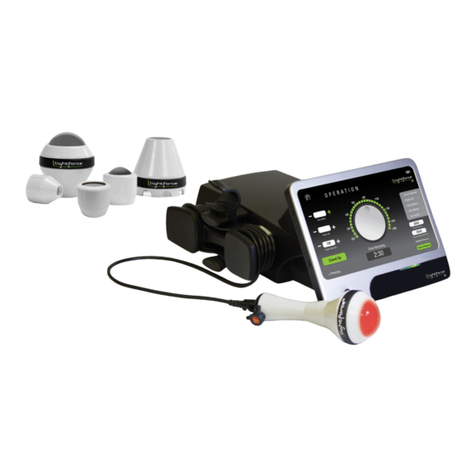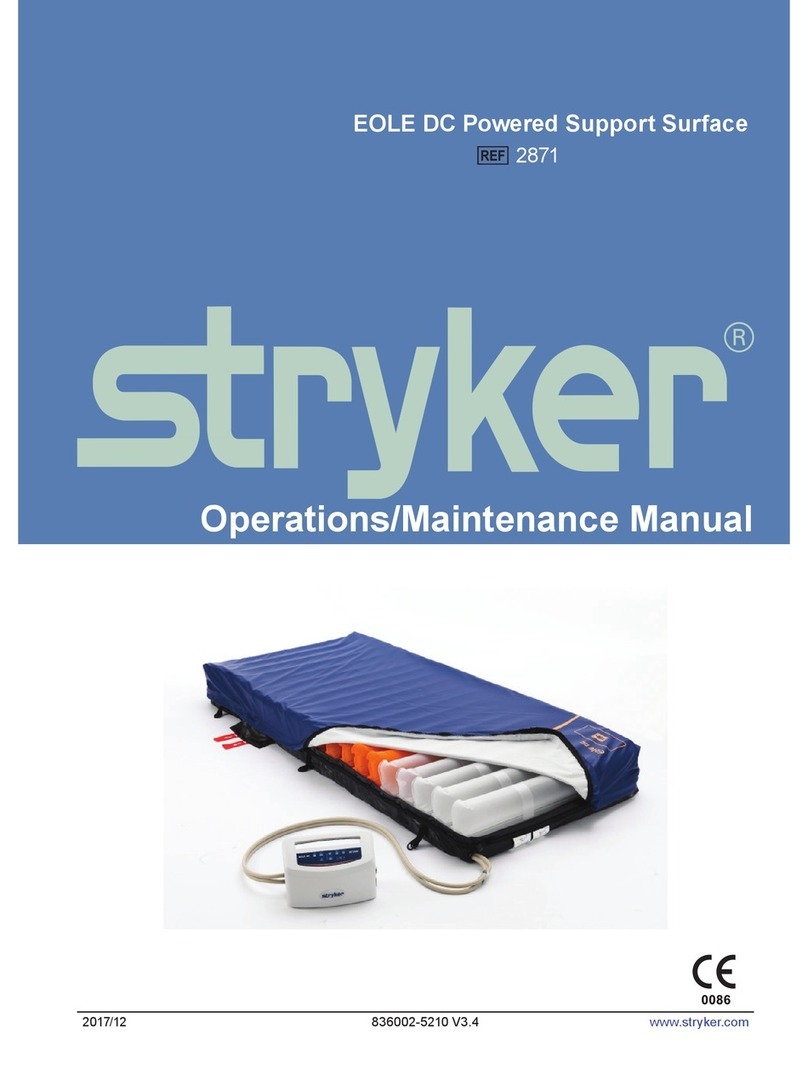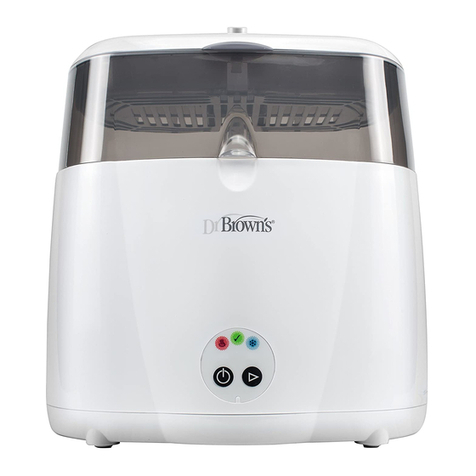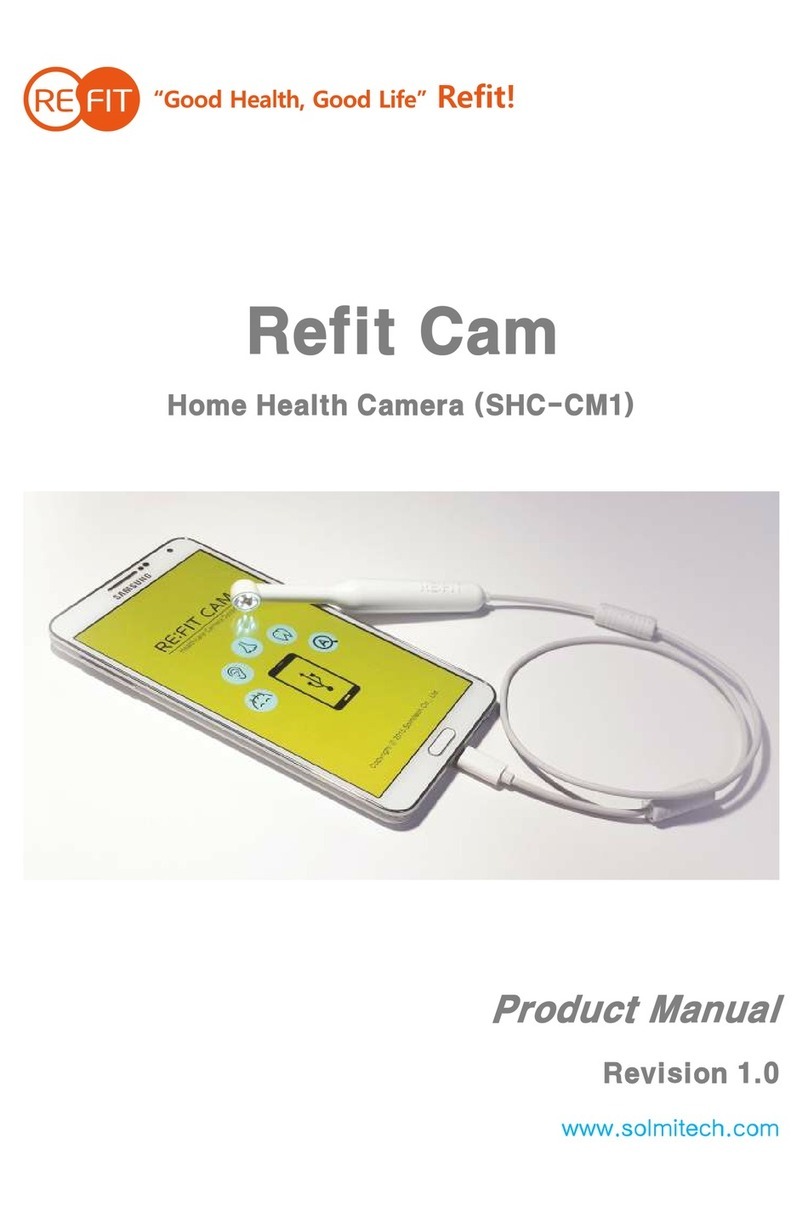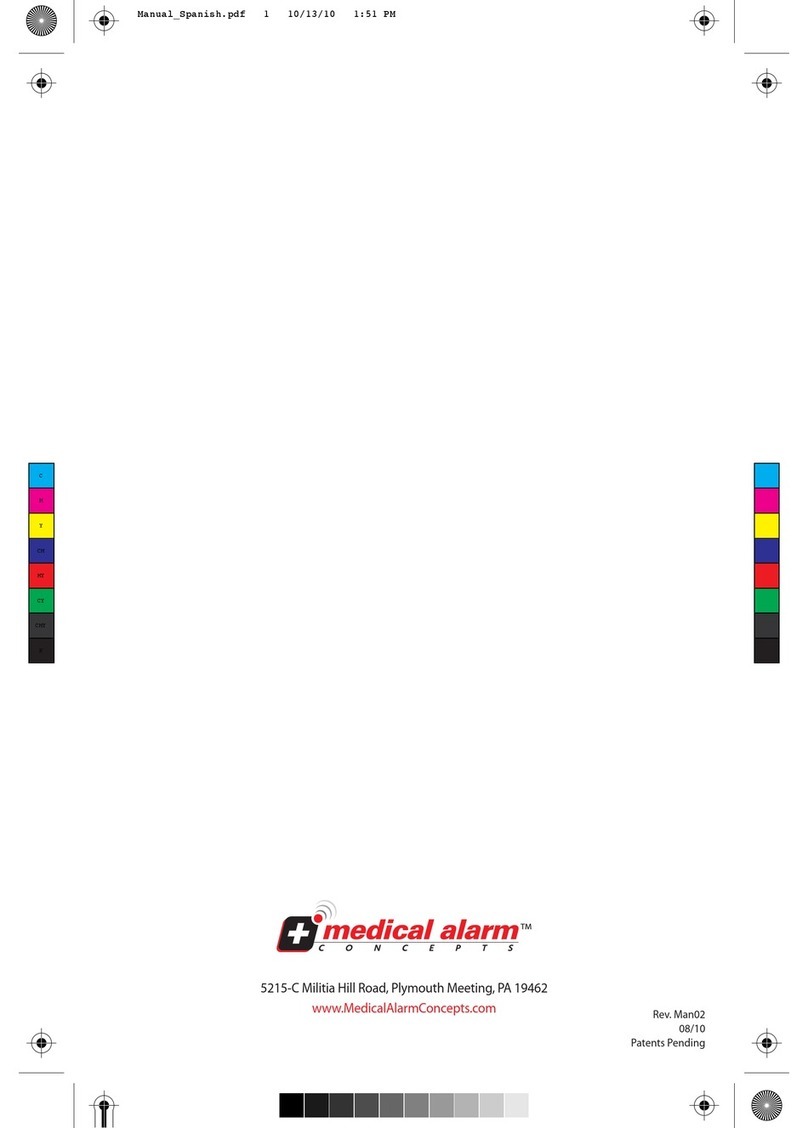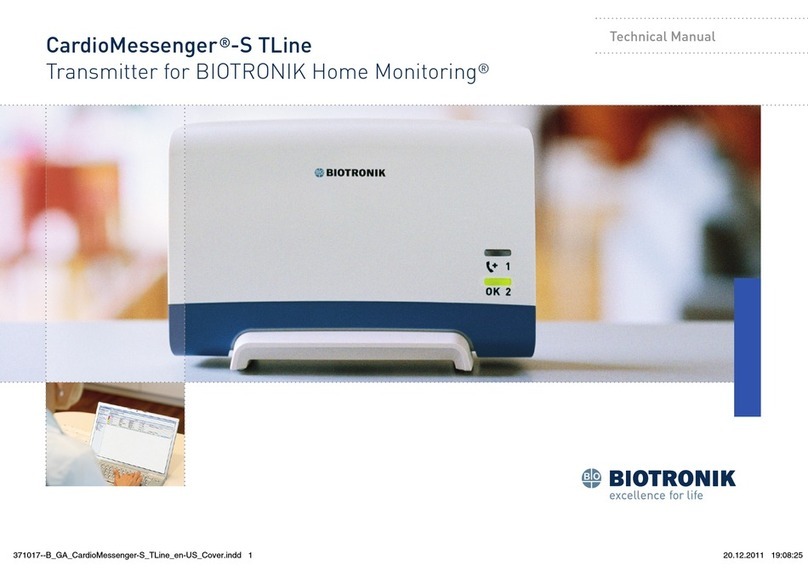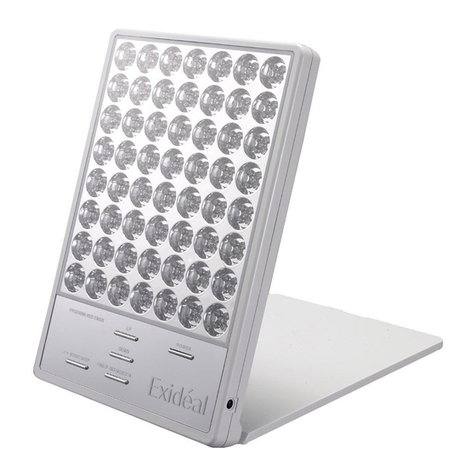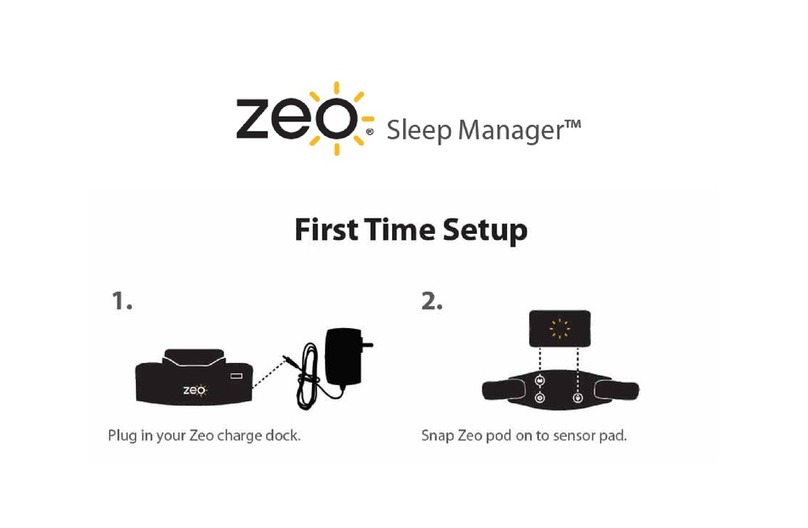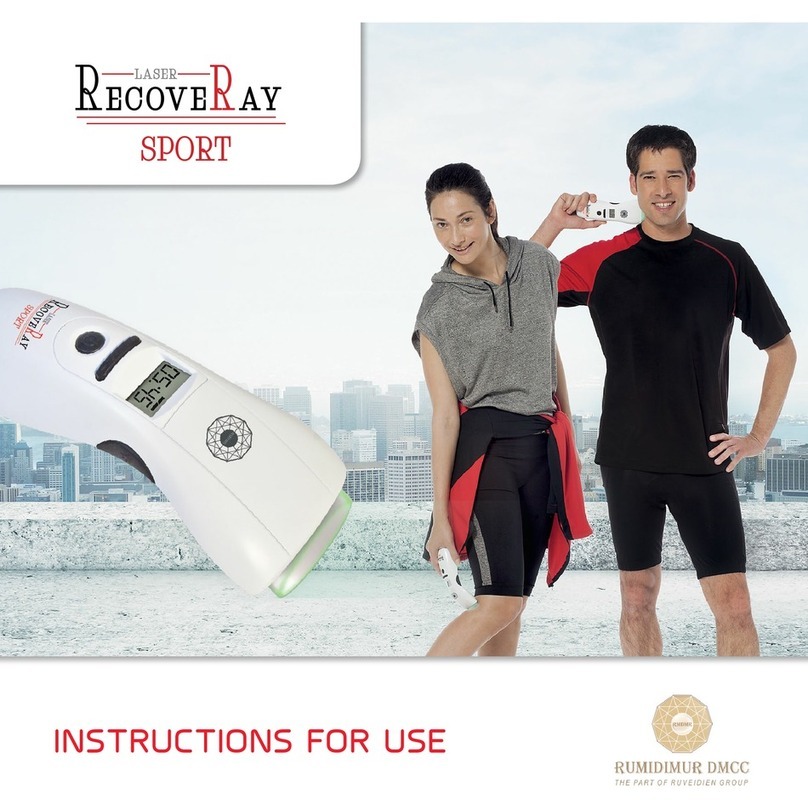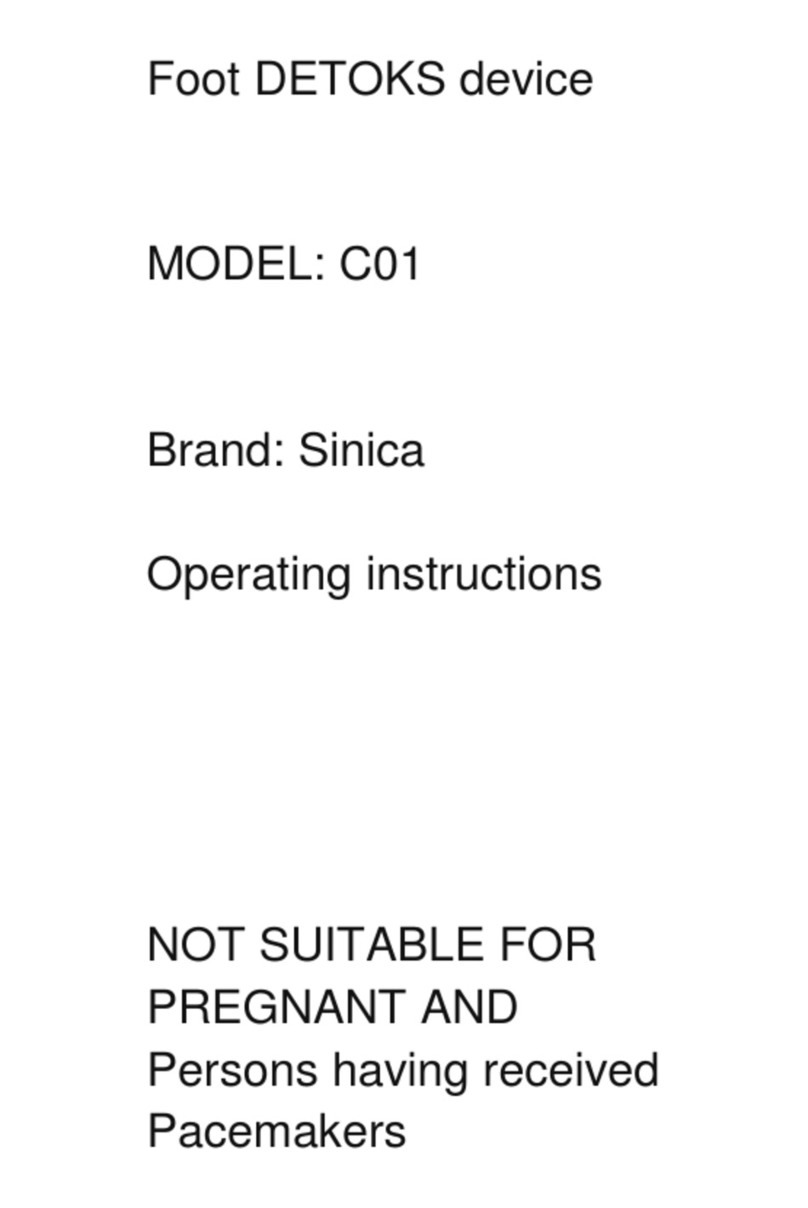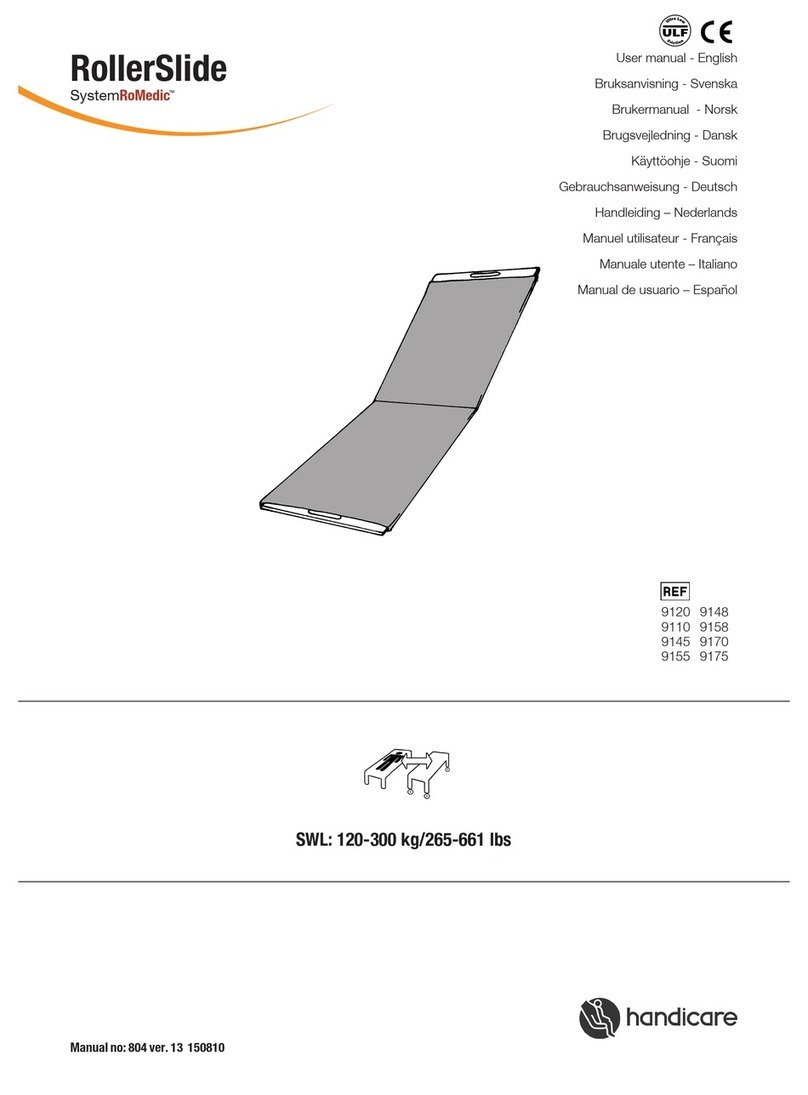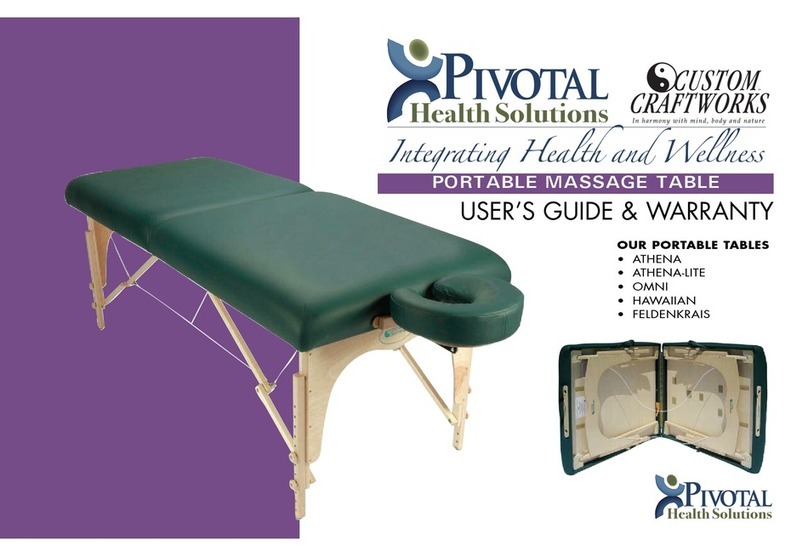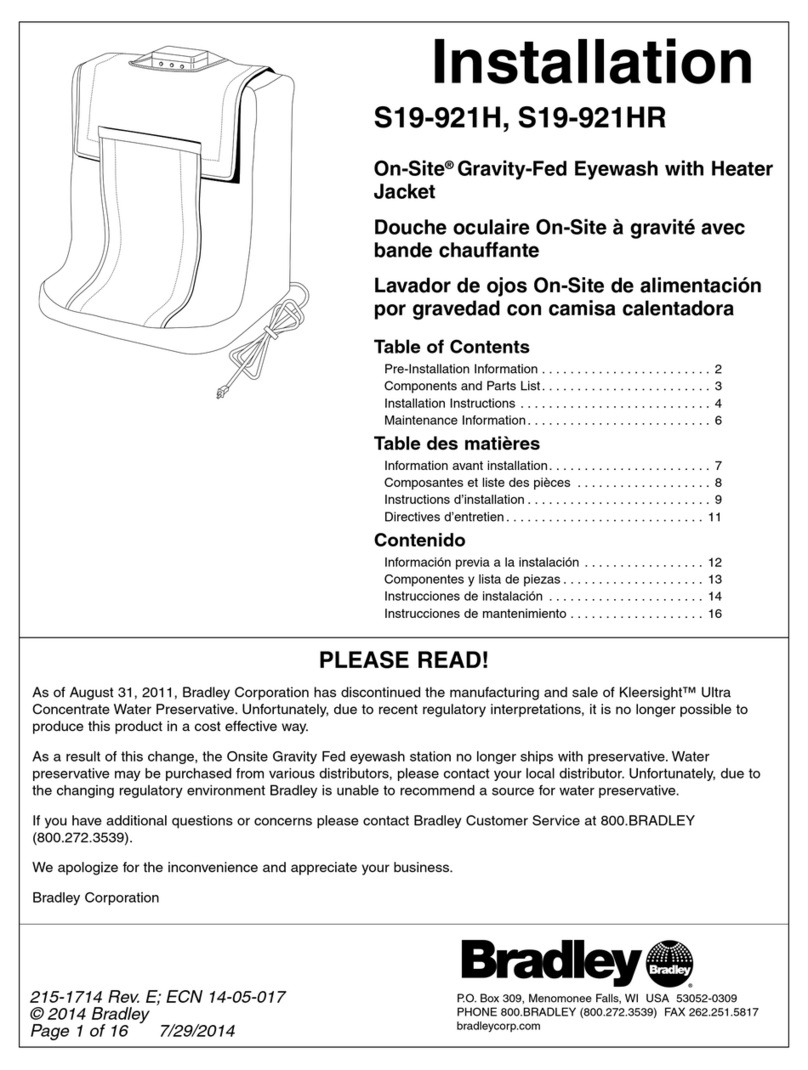
2
P10331
INTRODUCTION
PRESSUREGUARDAPM2 SERIES
Air therapy support surface
DESCRIPTION: The system consists of a foam shell with a high-density foam topper
serving as the support surface underneath the patient. The foam shell also includes
Safety EdgeTM bolsters at the sides of the mattress, providing added patient stability and
positioning. The system also includes the unique Heel Slope™feature, designed to further
reduce pressure for the sensitive heel area. Within the foam shell is housed the inflation
system, consisting of air cylinders which run lengthwise within the mattress. The air
control unit connects to the mattress at the patient foot-end.
MODES OF OPERATION: The PressureGuard®APM2 series provides options of
alternating pressure, basic lateral rotation, powered flotation and auto-firm.
INDICATIONS FOR USE: PressureGuard® APM2 models are powered, flotation therapy
mattresses providing a pressure management surface for the prevention and treatment
of pressure ulcers. The lateral rotation mode is indicated for use as a preventive tool
against further complications associated with critically ill patients or immobility.
CONTRAINDICATIONS:
Not recommended for patients for whom rotation or turning is contraindicated, such as,
but not limited to, unstable spinal cord injury, unstable skeletal fractures requiring
immobilization and/or skeletal traction, physician orders prohibiting rotation, or severe
posterior burns requiring skin grafts.
The PressureGuard®APM2 series is not for use by those with unstable
spinal cords. Patient injury could occur.
WARNING - To reduce the risk of electrocution
READ ALL INSTRUCTIONS BEFORE USING THIS UNIT.
1. Always unplug this unit immediately after using.
2. Do not operate near water.
3. Do not place or store product where it can fall or be pulled into a tub or sink.
4. Do not place in or drop into water or other liquid.
5. Do not reach for a product that has fallen into water. Unplug immediately.
6. Use this unit only for its intended use as described in the operating instructions.
7. Never operate this product if it has a damaged cord or plug, if it is not working
properly, if it has been dropped or damaged, or dropped into water. Contact Span-
America Medical Systems, Inc., for return of control unit for examination and repair.
8. Keep the cord away from heated surfaces.
9. Never drop or insert any object into any opening or hose.
10. Do not use outdoors.
